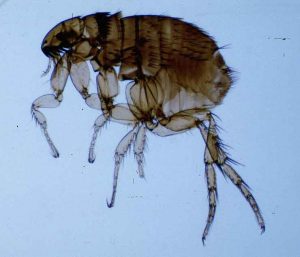
Parents did not allow the child to bring a kitten found on the street, as they suspected him of fleas.
But the girl, according to her, saved the animal from hooligans, who again can attack the kitten, it is worth leaving him on the street.
To reassure the baby, I had to have a serious conversation with her parents, and at the same time give useful recommendations for removing parasites. If the kitten has fleas for 2 months, you will learn how to get them out of the text below.
The content of the article:
- 1 How to get a flea from a kitten
- 2 How to bring fleas in kittens
- 3 Symptoms of fleas in cats
- 4 Flea Treatment Cats
- 5 How to remove fleas in a kitten, treatment and symptoms of fleas in cats
- 6 Treatment of fleas in kittens
- 7 How to get fleas from a cat. Drops, shampoos, flea collars for cats
- 8 How to get rid of fleas in a cat
- 9 Flea Remedies for Cats
- 10 Folk remedies for fleas
- 11 Are fleas dangerous to humans?
How to get a flea from a kitten
Do not conduct any research in order to name the most common problem in cats - of course these are fleas! From time to time we try to get rid of these "residents" on the body of our beloved kitten.
And despite the various methods of dealing with them, the question still remains: how to remove a flea from a kitten? This is due to the fact that recently the number of anti-flea medications has increased significantly, and you, as a buyer, can hardly choose the most effective one.
Therefore, in this article we will talk about the effectiveness of each method taken separately. Adult treatments are very different from kittens. Therefore, standard recommendations on the removal of fleas in cats are not suitable here. Therefore, the first thing you need to know is that treating a kitten and an adult cat implies separate types of treatment.
Personal treatment
Thus, when treating a kitten, it is important to be especially careful in choosing a treatment, because their body is still weak and their immunity is also low. The main symptom is weight loss, in addition, due to flea bites, kittens can undergo anemia and death is not uncommon.
We mentioned the diversity of modern drugs in the treatment of flea kittens, but it is important to know that at an early age most drugs are dangerous for kittens, which means more conservative treatment methods should be considered.
One of the most effective methods in combating fleas is combing them. The disadvantage of this method lies in significant time costs, but the effect is maximally positive. Insects combed with a comb or comb should be placed in water with the addition of a cleaning agent, which will leave no chance for fleas.
If we are talking about a newborn kitten, then you can get rid of fleas only in this way. See also How to get a flea in a cat How to get a flea in a dog Fleas for kittens At what age to take a kitten How to determine the gender of a kitten?
Therefore, it is important to keep clean the places where the kitten is most often located (that is, vacuum, wash, and so on). The value of the veterinarian’s advice is also that he will be able to give an affirmative answer regarding the use of any cleaning products. Now we will see the most common means against fleas, and their compatibility with kittens.
Flea drops
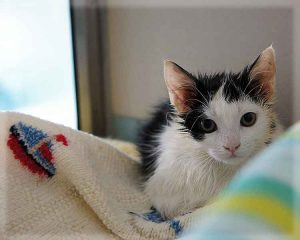
Flea collar
In this case, you should also not use a flea collar for newborn kittens. Its safe use is possible from the age of 2 months. But it is important to remember that there are collars designed for adults, and there are specifically for kittens, so you must also choose a collar carefully.
According to some experts, this method should be used only after removing fleas, that is, that the collar itself will help prevent the appearance of fleas, but will get rid of them.
Shampoos
The use of this tool (also depending on the composition) is possible for small kittens, but after washing, wipe the kitten dry and protect it from drafts for 8 hours. But it is also worth remembering that after washing with a special shampoo, the insects may not be dead, but simply stunned. Therefore, it is advisable to select them with your hands after the procedure.
Sprays
This is a universal remedy that is suitable for both babies and mature cats, but not all should be used, but only those that are allowed by the veterinarian.
Now that you have enough knowledge about how to get a flea out of a kitten, you can make the right decision regarding treatment. But at the same time, do not be self-confident, do not be lazy to go to the veterinarian - so save yourself and your cat from suffering.
How to bring fleas in kittens
Unfortunately, no one is immune from such misfortunes as fleas; they can be acquired by a cat at any age. Fleas in kittens can appear even in the first weeks of life, for example, transmitted from the mother or from other animals, if they are in your house.
If you suspect that your kitten is annoyed by fleas before treating it, make sure of this. To do this, carefully comb it with a frequent comb, planting it on white paper.
Only after this it is worth considering how to rid a kitten of fleas with the help of medications. There are a lot of them now and they are different in composition, speed, duration of action. Choose the most suitable product for the price and ease of use.
Do not forget that while your pet is small he needs only a flea remedy for kittens. When choosing a medicine, carefully read at what age you can take it, so as not to harm the growing body. Also carefully follow the instructions for use to prevent overdose of the drug.
Drops are a quick drug for fleas; they are convenient to use and effective. Never use canine “anti-flea” products for kittens; this can be dangerous for the kitten’s health. Choose only recommended drugs:
- anti-flea zoo shampoos ”;
- drops and spray "Front Line";
- drops "Advantage";
- drops of "Beafar."
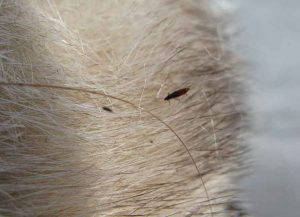
Any veterinarian will tell you how to remove a flea from a kitten without harming its health, and will tell you the right drugs.
Also, in parallel with treatment, the entire house must be treated to avoid reinfestation.
To do this, you need to dilute 2-3 ampoules of anti-flea drops (for example, Front Line) in a bucket of water and thoroughly wash the floors, baseboards and rugs with this composition.
The best recommendations from our readers:
Many owners do not even suspect that their beloved pet suffers from fleas. Fleas give cats a lot of problems, so you need to regularly inspect animals for parasites and, if detected, immediately start hatching.
Symptoms of fleas in cats
In flea-affected cats, anxiety is often associated with severe itching of the skin: flea saliva gets into wounds, causing allergic reactions. Cats scratch themselves and bite and comb, trying to catch the parasite with their teeth. This behavior can lead to the formation of dermatitis.
Severe itching is the most common symptom. Cat flea bites can cause allergic dermatitis. Just one bite can cause itching within a week. Fleas contribute to worm infection, as flea larvae feed on worm eggs. A worm egg, in turn, can successfully develop inside a flea.
Diagnostics
Based on the detected insects, their eggs and grains of semi-digested blood at the roots of the coat, the veterinarian makes a diagnosis of fleas. The main habitats of parasites:
- the upper part of the neck;
- intermaxillary space;
- stomach.
Flea Treatment Cats
Fleas are very tenacious insects. To date, there is no tool that can kill a parasite at all stages of development. The most effective way to combat fleas is to treat the cat and its home with antiparasitic drugs that are safe for humans and animals.
There are a lot of such means. When choosing a drug, be sure to pay attention to the composition. If it contains chemicals that can harm a cat or kitten, it is better to refuse such preparations. In addition, avoid any antiparasitic drugs that do not have the mark: "intended for cats."
If there are no complications in the animal, treatment should be continued, using the recommended dosage. If the cat shows signs of a negative reaction, you should immediately stop all procedures, bathe the animal in clean water and show it to the veterinarian.
How to remove fleas in a kitten, treatment and symptoms of fleas in cats
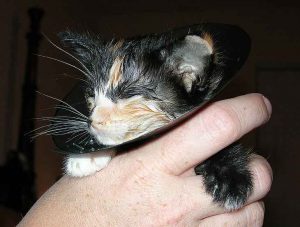
They appear in cats and dogs - for humans they are harmless, but can sometimes bite - this, for the most part, refers to fleas that are found on the body of dogs.
It is sometimes difficult to solve the problem of the appearance of fleas - these parasites are found not only on the body of the animal, but also in baseboards, carpets, and inaccessible places. It is the non-observance of hygiene rules that often causes these parasites to appear in a domestic cat.
The flea population is gigantic in size: those fleas that you see on the body of the animal are only 5% of the number of fleas living in the apartment.
Symptoms of fleas in cats
Fleas in cats are a phenomenon that is hard to miss. The animal becomes more restless, constantly scratching and scratching itself, biting and combing places damaged by parasites. Such actions often provoke the occurrence of dermatitis and baldness of certain parts of the body.
The cat suffers from severe itching - just one flea bite causes discomfort that lasts about a week. Having examined the hair and skin of a cat infected with fleas, one can often find both the insects themselves and traces of their life in the form of “black mud”.
The appearance of fleas is often associated with infection of the animal with worms, which also requires prophylaxis and therapeutic measures.
Treatment of fleas in adult cats
Almost any treatment method is suitable for a healthy adult - you can use sprays, shampoos, drops, collars, etc. If the cat has recently had a disease or is prone to any infection, it is best to consult a veterinarian to determine if there are any contraindications.
Treatment of fleas in kittens
Fleas in kittens are a much more serious disease than in adults. Kittens have weaker immunity, so they easily take on various infections. Also, small individuals tolerate the symptoms of the disease more difficult: from many flea bites, they significantly lose weight, are prone to anemia, and often die.
Of course, this method involves high time costs, but it is highly effective, and sometimes it is one possible way to get rid of parasites.
For example, in newborn kittens, fleas can only be bred in this way. Other means will help you to get rid of the kitten from fleas - which veterinarian will tell you which are suitable for treating small individuals.
How to remove fleas in a pregnant and lactating cat?
If fleas are wound in a pregnant cat or in a nursing individual, it is necessary to more carefully choose the drug used. Most sprays and drops are very toxic, and can not be used in such cases. It is better to use a flea shampoo - it has a lethal effect on parasites, and for a cat it is absolutely harmless.
Following the instructions, wash the cat with an insecticidal shampoo, rinse the product thoroughly, then dry the coat and comb it with a comb. Some sprays can also be used in the treatment of pregnant and lactating cats, for example, Front Line (the price of the drug is 698 rubles).
Prevention of fleas in cats and kittens
A flea can be removed from a cat only by carefully processing its habitats, bedding, sleeping places, etc. The fact is that adult fleas spend most of their time on the body of an animal, but their larvae, pupae and eggs are mainly found in the living space of a cat or kitten.
Experts assure: with a vacuum cleaner you can destroy at least 50% of flea masks. In addition, the removal of fleas is facilitated by the processing of objects with which an infected animal comes into contact - these include a carrying bag, a car seat, the owner’s clothes, etc.
Flea drops for cats
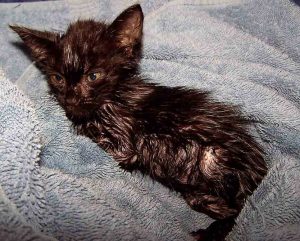
The active substance is fipronil. One of the highest quality, but also the most expensive means (approximate cost 300-400 p.)
Dana-2 Ultra - such drops will help you rid the cat of fleas, lice, lice, and ticks. In addition, the advantage of this drug, created on the basis of fepronil, is the lowest toxicity compared to analogues.
Finding an animal in the fresh air, swimming and other factors do not reduce the quality of the impact of this flea remedy. The disadvantage of this drug is that it can not be used to treat kittens younger than 12 weeks of age and pregnant individuals. (The price of Dan-2 Ultra is about 34 rubles).
"Celandine" - Another remedy against fleas of Russian origin.Kills both adults and their larvae. Belongs to the category of moderately hazardous substances. Please note that this medicine is toxic to bees and fish.
When choosing drops, carefully read the instructions - preparations containing permethrin, as well as those intended for dogs, are dangerous for cats.
Collars
A flea collar for cats is a preventative measure, so it should be used in conjunction with other means of protecting the animal from parasites.
Hartz flea collar. The assortment of the company has several varieties of collars - they differ in the period of validity (3, 5 and 7 months). They kill not only adult fleas, but also their larvae, as well as lice and ticks.
The advantage of this collar is that it is resistant to moisture - even if the animal falls under heavy rain, the collar will not stop acting. The downside is that it should not be worn on kittens under 12 weeks old. (The price of collars is from 100 rubles).
Red Diaz collar for fleas and ticks for cats. Effectively combats fleas and ticks - with the first - for 5 months, with the second - for 2. The active ingredient of this drug is diazinon. Minus - you can not use a collar with other insecticides. (Price - 114 rubles).
Flea Shampoos
Shampoo "Meadow insecticidal on herbs" (price - 75 rubles). It has a pleasant smell, makes the hair of the animal smoother. However, in order to save a cat from fleas, shampoo must be used in conjunction with other means - in particular, treat them with an apartment.
Shampoo "Barsik - nature" (Cost - 26 rubles). Not only kills ticks and fleas, but also promotes the rapid healing of skin wounds.
Sprays
Flea spray is an equally effective way to get rid of parasites. It can be of two types: spray can or aerosol. The spray processes the entire body of the cat. On particularly sensitive places (head, in particular, the area around the ears and eyes), the spray is applied not directly, but with a cotton pad.
Cats are sometimes afraid of such means, so processing their body becomes very problematic - in such cases, the spray is applied to a cotton pad or soft cloth, and then the animal’s body is rubbed.
Hartz flea & tick cat spray will help you cure a flea cat. Spray the product onto the body of the animal from a distance of 15 cm until the coat is moistened. If the cat is long-haired, make sure that the product also gets on the skin of the animal.
Do not use a flea remedy for cats more than once a week. The advantage of this drug is that they can even treat kittens who have reached 6 weeks of age. If fleas have appeared in a cat who suffers from other diseases or in a pregnant cat, consult a veterinarian before using the spray. (The cost of a capacity of 236 ml is 368 rubles).
Flea spray Bars is the answer to the question of how to get fleas from a cat or a dog. It allows you to get rid not only of fleas, but also of ixodid and sarcoptoid ticks, lice and lice-eaters, which is its indisputable plus.
How to get fleas from a cat. Drops, shampoos, flea collars for cats
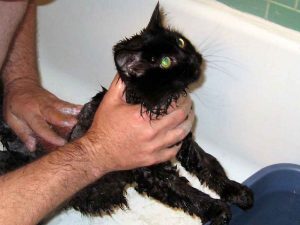
Remember that a domestic cat doesn’t have to be outside to catch fleas.
You can bring larvae or eggs on your shoes, or it is enough for a cat to run out once to get infected.
For those who don’t have time to read the whole article, I’ll briefly say that the best, in my opinion, the most effective means for removing feline fleas is a spray from fleas at the withers from Front Line.
Cat fleas are carriers of worm larvae (therefore, it is very important, before doing antiparasitic prophylaxis, to drive off worms in cats).
Cats may develop an allergy to flea bites and then skin diseases can not be avoided. And if small kittens are infected with fleas and treatment is not carried out in a timely manner, then this leads to a weakening of the body, anemia and death.
Signs of Fleas
The following symptoms appear in the animal:
- anxiety;
- constant scratching or licking of certain parts of the body;
- the presence of small wounds;
- visual observation of insects;
Take a comb with small and frequent teeth, place the animal on a flat white surface (for example, on a sheet of paper). Comb through a couple of times and look at the leaf - fleas and flea feces from the undigested blood of the animal will be clearly visible on white.
If you find any of the above in your pet, then you must immediately resort to the fight against parasites.
How to get rid of fleas in a cat
In this section, you will learn how to treat a cat from fleas:
- In order to remove parasites, one should start with flea fleeing, since they are carriers of worm larvae.
- Prevention against fleas and ticks should be carried out at least 1 time in 3 months, and if your cat is on the street and in contact with other animals, then at least 1 time in 1-2 months.
- 3 days before and 3 days after the procedure, bathing the animal is prohibited, unless this is required by the method of applying some drops to the withers.
- It is important to use products designed specifically for cats. Since some flea medications in dogs contain dangerous substances for the feline family.
- Without consulting a specialist, you should not use preparations against fleas and ticks for newborn kittens, pregnant and giving birth to cats, as well as sick animals.
- After treating the wool with sprays and drops, do not let the animal lick itself for about half an hour.
It is necessary to process with a special tool not only the pet itself, but also the place where he sleeps (for example, a house or a lounger) and plays (game complex, scratching post). It is also very important to vacuum the surfaces that cannot be washed, namely sofas, armchairs, carpets and other floor coverings.
The effectiveness of a flea medicine is affected by the correctness of its use, namely:
- three days before and three days after treatment, you can not bathe a cat;
- proper application of the product not on the cat’s hair, but on the skin in the withers and along the spine;
- It is necessary to observe the correct dosage of the product.
The ratio of the number of drops to the mass of the animal:
- a cat weighing up to 1 kg is dripped with no more than 10 drops in the withers area;
- animals weighing 1-2 kg are applied up to 20 drops;
- if the cat has a body weight of more than 3 kilograms, then a whole ampoule-pipette should be used.
Flea Remedies for Cats
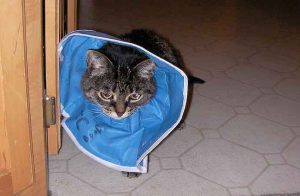
But flea eggs (50%), larvae (35%) and pupae (10%) are not only on the body of the animal, but also in the environment.
That's why you need to process not only the animal, but also those places where your cat sleeps, plays, etc.
Today, a wide variety of forms and types of insecticides are presented on the pet products market. They all differ in price and effectiveness, so getting confused is not at all difficult.
Shampoos
There are expensive ones, and there are quite cheap ones. Many do not use flea shampoos, as they act only on adults, and consider them ineffective. If you know a good anti-flea shampoo - advise, we’ll try it with pleasure, but for now read our article on shampoos for cats with prices and reviews.
Dusting powder
More common for kittens. Like shampoos, they act only on adult fleas. In addition, they are inconvenient to use and can cause irritation of the respiratory tract and mucous membranes of the animal.
Collars
They are quite effective and especially suitable for those cats who live or walk outside the apartment / house. Collars provide protection against fleas and ticks, on average for 2-3 months.
Disadvantages of collars:
- a rather unpleasant odor that persists all the time while the collar lasts
- animal discomfort from habit and especially in the summer, when it is hot; there are times when wool begins to fall out in the collar area.
Drops at the withers
Probably the most popular remedy for combating fleas and ticks. There are both for adult cats and kittens.
Drops are applied to the space between the shoulder blades and along the spine of the animal. A very effective remedy, although some animal owners claim that fleas disappear from the places where they were applied and migrate to untreated areas. Personally, I treated my cat with drops against fleas and was always happy with the result.
Types of drops at the withers:
- Front Line Spot He Cat. According to reviews, droplets that “expel” fleas within 24 hours and protect against re-infection for 2 months, and ticks for 1 month, have proven themselves well. To my cat I carry out the prevention of fleas and ticks with these very drops and Front Line spray.
- Hartz. They act on flea eggs and larvae, so before treating the animal with drops, you should bathe it in flea shampoos or spray it to destroy adults. Such drops are great for those cats that walk on the street and come in contact with other animals.
- Lawyer from Bayer. Protect not only from fleas and ticks, but also from helminthic invasions.
- Stronghold spot he
- Leopard. I consider them as a budget option.
More about Barca
Today, one of the most popular means against fleas and ticks is a drop on the withers of Bars. And this is not surprising, because with an average, mind you, low price, this tool is highly effective. Drops are well tolerated by cats of various breeds.
With a single use, the drug retains its effect for 1-2 months. Owners of young kittens, if necessary, can also purchase flea drops, as there are drops for kittens in the Bars product line.
Drops from fleas and ticks Bars can be used for healthy pets who have reached 10 weeks of age. When applying, the weight of the animal should be taken into account, especially for cats, since it is purrs that are more sensitive to the active ingredient of Bars - Permethrin drops.
In general, the reviews for drops against Bars fleas are positive and in most cases these drops have established themselves as a high-quality and effective product.
Sprays
Many sprays of various manufacturers are on sale, but I can only say about Front Line spray.
Folk remedies for fleas
I immediately draw your attention to the fact that I have not tested these recipes and folk remedies for fleas in cats can be much more toxic than those sold in pet stores. They are published here for informational purposes only, based on somewhere heard and read earlier information.
You are solely responsible for using folk flea recipes on your pet.
- Salt is dissolved in a bowl of warm water. The ratio of water to salt is about 50 g of salt per 1 liter of water. The cat needs to be carefully dipped into this salty water around the neck. Soak for 5 minutes and then rinse the animal with clean warm water, wipe thoroughly and comb out with a comb.
- Crush 7 cloves of garlic and add 700 ml of water to them. Leave the resulting mixture overnight, and rub it into the withers area in the morning so that the cat could not lick the product.
- A decoction of two herbs, tansy and wormwood, also has a negative effect on fleas. In equal proportions take wormwood and tansy, brew. When the broth cools down, it must be rubbed into the skin of the pet along the entire back. Then wrap the cat in a towel and soak for 30 minutes.
- Wormwood decoction, many recommend as an effective tool in the fight against fleas in cats. To prepare this remedy, you need to take 20 grams of dry wormwood or 40 grams of fresh. The grass is poured with two glasses of water and boiled over low heat. Then the broth is allowed to cool and with the help of a cotton swab, the resulting product is applied to the animal’s hair.
If your pet loves sunbeds or pillows, then you can prepare him a medical mattress. To do this, take coniferous sawdust and stuff them with a small pillowcase. For greater efficiency, you can add several wormwood branches to the sawdust.
Are fleas dangerous to humans?
No one will give you a clear answer to this question. Since some people bite fleas, while others can sleep peacefully with a flea pet in the same bed and not feel any discomfort.
But, you should remember that:
- fleas are carriers of various infections
- fleas can cause allergies, skin diseases and cause helminthic infestations that are transmitted to humans.
Therefore, regular antiparasitic treatment of pets is mandatory, even if the animal is sitting at home and never gets on the street.
Every three months I buy my cat a flea capsule, which I pour on my back (withers. It is much more effective than a collar. Moreover, the remedy also helps against ticks.
In fact, now everything has become easier, in any veterinary pharmacy we buy drops from fleas, we drop a kitten at the withers, and in a day or two there will be no trace of fleas. And most importantly, the pet will not be able to lick this muck - it just won’t get ... But before there were problems. I remember that we even processed the kitten with dichlorvos, almost ditched ...
As a fish seeks where it is deeper, so a flea seeks where it is better. Fleas definitely bite a person. But when a kitten and a man are near, a flea will choose an animal. Therefore, you can sleep soundly with the animal. Parasites will drink the blood of a pet (Remember the medieval ladies in the pictures. They keep furry couplings. These are flea traps).
It is interesting to look at the cat, which will lick after bathing in the broth of wormwood. I agree that so far the best way is an ampoule. A couple of drops between the shoulder blades of a pet and fleas as it did.
We got a kitten in the village. Fleas attacked him immediately. The drops that we dripped on his withers and rubbed them 2 times a day helped well. Once a month they washed a kitten with decar soap, fleas carry this smell. Additionally we hung a collar and the insects never returned.